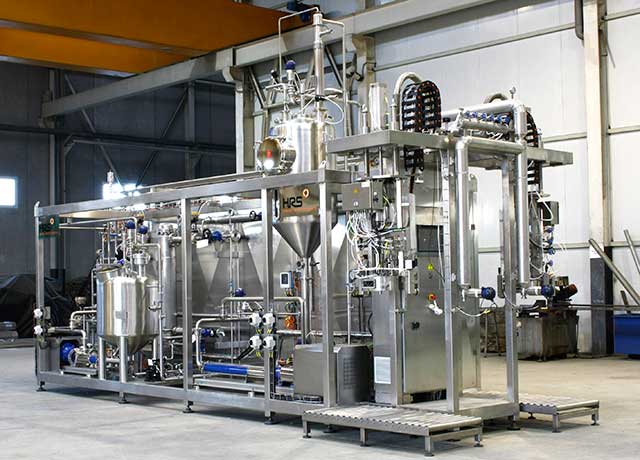The advantages of cold aseptic filling

Aseptic technology has become well established in the food and drink sector, yet some businesses are still unaware of its benefits or do not believe that it can be used with their products.
In most cases, hot filling sterilizes the container as the product (which is still hot from cooking or sterilizing) is filled. However, the temperatures required often have unwanted effects on the quality of the product, and the heat imposes restrictions on the type of container which can be used: for example, hot filling of lightweight plastic drinks bottles can lead to distortion of the plastic.
Consequently, cold aseptic filling has become a common technique with drinks manufacturers for products including UHT milk, fruit juices, and sports and energy drinks. Its flexibility means that it is suitable for a wide range of products from fresh fruit dices and purees to marinades and dairy products.
Aseptic filling systems generally combine a number of elements into a single integrated production line. This integrated approach helps to ensure microbiological safety throughout the process from initial treatment through to the sealing of the finished product. The steps included in an integrated aseptic filling line (such as the HRS Asepticblock) typically include:
-
Thermal treatment
The types of product which are most likely to benefit from aseptic filling are those which are pasteurized or sterilized. This step usually comprises a suitable tubular heat exchanger, such as the HRS MI, DTA or AS Series.
-
Cooling (where necessary)
It may be necessary to cool the product following pasteurization or sterilization. In such cases another heat exchanger will be used, such as the AS Series. If cooling the product is likely to increase its viscosity, then a scraped-surface unit, such as the patented Unicus Series or R Series heat exchanger, may be used.
-
Sterilization of the packaging
Prior to filling, packaging is normally sterilized using thermal or chemical methods (such as peroxyactic acid or hydrogen peroxide), although the packaging is often supplied pre-sterilized in aseptic packaging that can be put into the filling line without contamination. It is vital that aseptic conditions are maintained between sterilization and sealing; just one reason for adopting an integrated aseptic processing solution.
-
Filling and sealing under aseptic conditions
There are numerous systems of aseptic filler on the market, but all try to balance speed, accuracy of operation and flexibility of filling (for example, working with different products and containers), while maintaining the microbial integrity of the product and the sterility of the containers. The AF Series of aseptic fillers meets all of these criteria and is suitable for both high and low acidity products.
The business case for aseptic filling
There is of course a financial investment required to install aseptic filling technology, but when conducting a cost/benefit analysis, some of the factors to consider include:
- Volume: Aseptic filling lines normally operate on a continuous basis and therefore are much faster than batch cooling operations.
- Quality: Any heat treatments can be driven by product requirements, rather than the need to sterilize the container, making high temperature, short time (HTST) pasteurization feasible in many cases. This preserves key quality characteristics such as taste, nutrient content and color.
- Flexibility: Most aseptic filling lines can be configured to supply a range of products and fill a range of containers including PET, HDPE, LDPE, glass, cans, foil etc. Not only does this increase flexibility, but also helps to future-proof installations.
- Packaging: Although there may be an increase in costs associated with the need to purchase sterile packaging, many packaging types used in aseptic filling are generally lighter (and therefore cheaper) than their hot-fill equivalents.
When considering aseptic filling, companies need to weigh up the safety of the proposed solution with capital and operating costs, operational safety considerations and the effect on product quality. In most situations, the business case to adopt cold filling quickly becomes apparent.